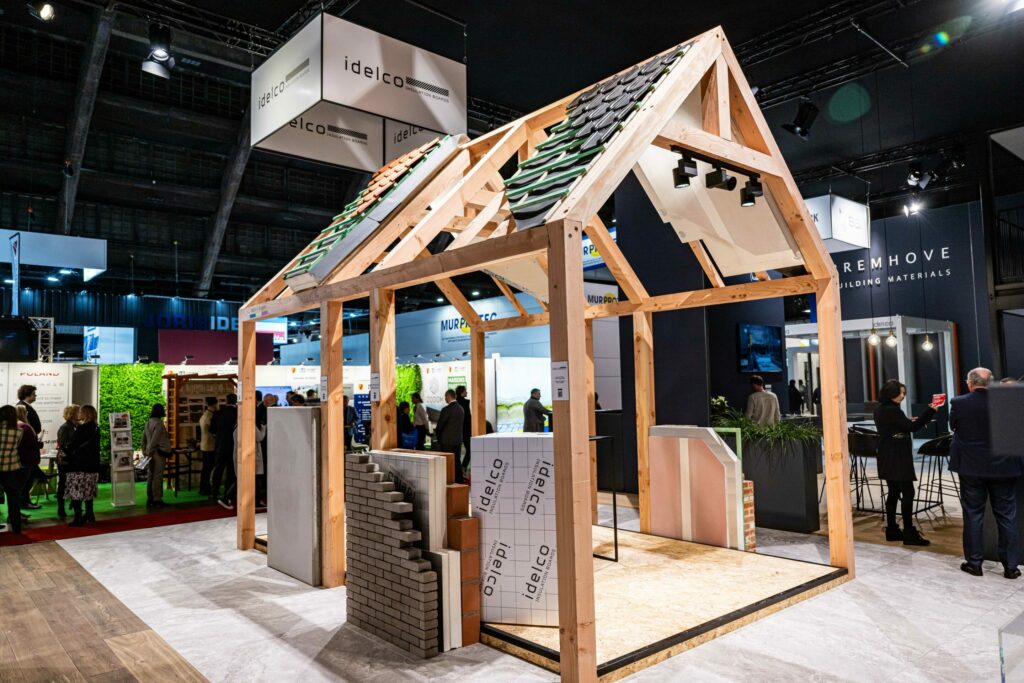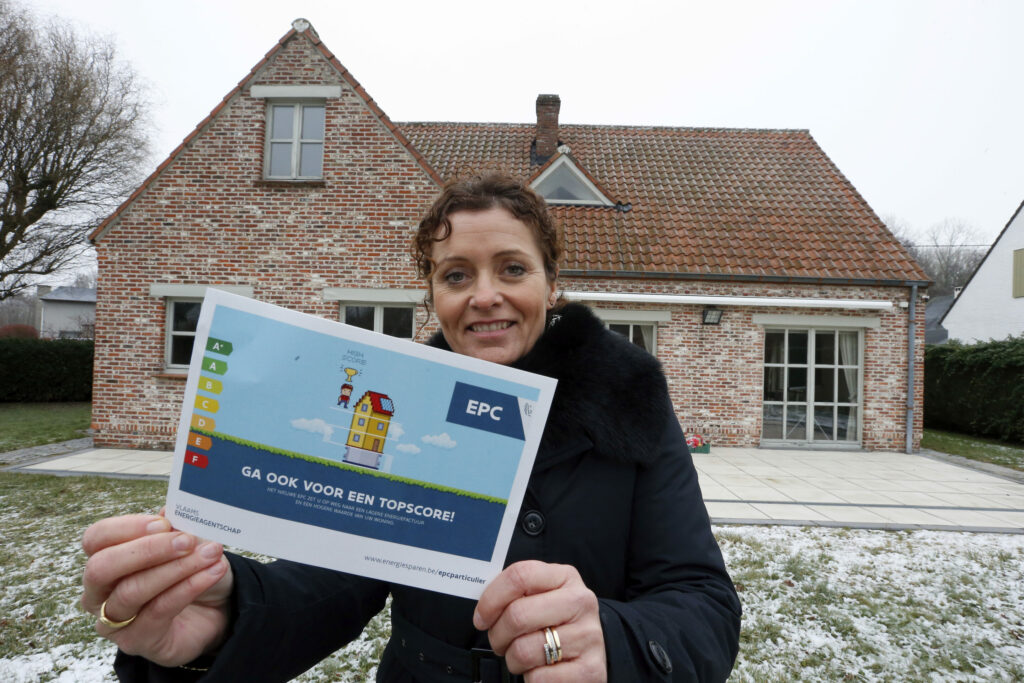The value of energy-efficient properties is rising much faster than energy-guzzling homes – and the price gap is only expected to widen in the coming years. What does this mean for people who already own a home, or who are looking to buy?
Property prices in Belgium have shot up in recent years, however, this increase was not spread evenly. The EPC (energy performance certificate) score – indicating the energy consumption per square metre (kW/m²) with a letter-based scoring system, with A being the best and F the worst – is increasingly impacting their selling price.
Recent figures from the Federation of Notaries shared with The Brussels Times showed that the median price of the most energy-efficient homes (label A) in Flanders – where every house or flat being sold or let out for longer than two months needs an EPC – has risen by almost 25% in four years, from €315,000 to €389,000.
Homes with an A label are rising twice as fast as properties with a B label because there is high demand for but little supply of such homes.
Meanwhile, the prices of homes with an F label remained largely stable (from €229,000 in 2021 to €241,000 in 2024). "Prices of energy-guzzling homes are indeed increasingly different from energy efficient properties," Director-General of the construction federation Embuild in Flanders, Caroline Deiteren, told The Brussels Times.
Renovation obligation
Properties with a good EPC score became increasingly sought after during the energy crisis, which saw buyers willing to pay a higher price to save on their monthly energy bills. However, the difference in price increases is largely driven by the Flemish renovation obligation which since 2023 has required anyone buying a house with energy label E or F to upgrade it to label D within five years.
This has given sellers of houses with A or B labels leeway to bring up their selling price. At the same time, properties with E and F scores put potential buyers in a better bargaining position to reduce the price.
The current cost of renovations to increase the score from F to A is estimated to be around €175,000, which is still more than the €148,000 difference in the selling price of these properties. However, the expectation is that the price gap will further widen in the coming years so that eventually, the difference should be sufficient to cover the cost of the renovation.
"The mechanism is doing its job," said Deiteren. "It is lowering the prices of energy-inefficient homes. This will lead to almost no price difference between buying a property with label A or purchasing a cheaper home with label F and renovating it. The difference will provide people with the necessary budget for renovations."Svenn Piessens, founder of 'EPC-Assistent' and expert in energy renovation projects, has seen a "tremendous" increase in the number of renovation requests in recent years, especially for roof renovations with insulation. "The biggest premiums are granted for these works – and Belgians love premiums," he told The Brussels Times.
This highlights that the mechanism is activating private capital for renovation to make homes more energy-efficient – a much-needed move, as the housing supply in Flanders is fairly outdated, especially compared to other European countries. "This would always have been an investment that we as a society then face. The government plays a role in financing this, and that's why they introduced the premiums. But a big part is still going to have to come from the private individuals."
Profit-making?
The mechanism's criteria will become stricter in the coming years: by 2045, both flats and homes will have to have a label A. But for now, the renovation obligation only requires an upgrade to a D label.
Piessens estimates that increasing the score for a half-open development or a closed development from label F to D – which involves replacing the windows and doors, insulating the roof and installing solar panels – costs between €30,000 to €45,000.

A skeleton construction at the 2023 edition of Batibouw, the annual building, renovation and decoration exhibition in Brussels Expo in Brussels, March 2023. Credit: Belga
By contrast, the median selling price of a home with a D label is €54,000 higher than a property with an EPC score of F. "This will create two 'camps'," Piessens said. "Some people will only be in the market for an A or B label home, and will be willing to pay more for that."
Others will see this as a financial opportunity. "With the help of government support measures [with Mijn VerbouwPremie in Flanders, people can get back up to 35% of their investment], people can even make a profit."
Related News
- Brussels property prices cool off but houses still almost €100,000 more expensive
- Energy poverty: Belgium's support protected most vulnerable during 2022 crisis
- Energy performance certificates and actual consumption: Are we missing the full picture?
While complying with the current renovation obligation is a key driver for carrying out energy renovation works, there are other long-term benefits. "Better insulated homes ensure the energy used to heat the property stays inside," Piessens noted. "And less heating is needed when it's cold outside, because of the insulation," dramatically reducing energy bills.
"Increasing the EPC value also means increasing the quality of living," Deiteren said. "It improves air quality, and reduces the chance of damp issues or asbestos in the home." This in turn adds to the property's value.
However, the mechanism itself has its flaws. Embuild, together with other organisations in the industry, has called for an increased focus on decarbonisation of heating and cooling within the label system. It also wants real energy consumption to be included alongside this theoretical model so that the "actual gains from energetic interventions become clearer."

